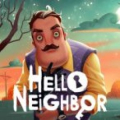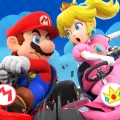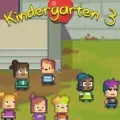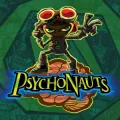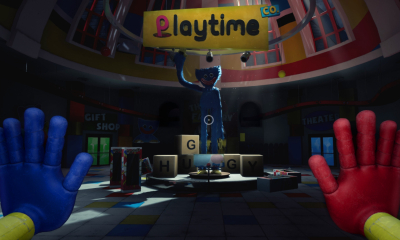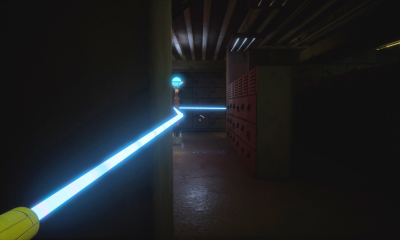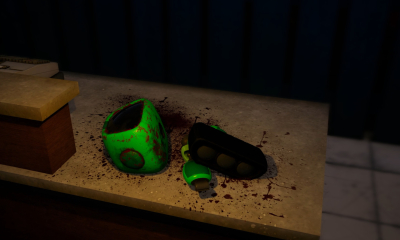In the ever-expansive domain of survival horror games, few have risen as meteorically or as unsettlingly as "Poppy Playtime." This indie game has piqued the curiosity of many gamers, leading them through the twisting hallways of nostalgia and terror. Poppy Playtime seamlessly transports players back to their childhood, only to haunt them with that very sentimentality. It's a game that toys with the concept of playthings turned sinister, presenting a narrative that is as captivating as it is eerie.
Poppy Playtime is set within the derelict walls of Playtime Co., a once-gleaming toy factory now fallen into disrepair and shrouded in mystery. Players exploring the facility to uncover the dark secrets it harbors about the whereabouts of the staff who once worked there. The game cleverly interweaves the innocence of toys with a chilling atmosphere, resulting in an experience that both delights and disquiets in equal measure.
The gripping storyline, combined with ingenious gameplay mechanics, has propelled Poppy Playtime to considerable popularity since its release.
Exploring the Corridors of Playtime Co.: Gameplay and Atmosphere
Upon beginning their shift at Playtime Co., players are immediately introduced to the game's unique mechanic: the GrabPack. This multifunctional tool allows the gamer to manipulate objects from a distance, and solve various puzzles scattered throughout the factory. The GrabPack serves not only as a puzzle-solving device but also as a means of defense against the monstrosities lurking within.
Players must navigate through the dimly lit rooms and cramped passages, all while piecing together the tragic history of Playtime Co. The factory is brought to life with intricate details, casting a veil of both wonder and horror over the landscape. Each area of the factory teems with forgotten toys, giving players a disturbingly intimate glimpse into what was once a place of joy.
The soundtrack of Poppy Playtime plays a crucial role in building the foreboding atmosphere. Dissonant melodies and the echoes of toy-like sounds strategically punctuate the silence, heightening the tension and suspense. It's a musical approach that adheres to the game's themes, enveloping the player in a feeling of trepidation as they delve deeper into the forgotten facility.
Enhancing the impression of the game is the voice acting, which livened up the characters encountered. The performances contribute to an overarching sense of desolation and past enthusiasm—now twisted and shattered. These narrative elements combined with the visual artistry result in a deeply atmospheric game.
The visual style of Poppy Playtime is notable for its juxtaposition of bright, vivid colors, and the haunting darkness of abandonment. The dilapidated factory is both a canvas of childhood innocence and a shadowy crypt of fears realized. Such striking visuals not only create a substantial impact on the player but also draw comparisons to the exaggerated characteristics of actual toys.
The influence of Poppy Playtime has spread within the gaming community. Its distinctiveness and the legacy it has started to forge speak to the ingenuity and potential of indie game development. Fans draw parallels between the chillingly playful nature of the game and beloved classics in the genre, like ""Five Nights at Freddy's,"" appreciating the way it revitalizes the childhood-turned-nightmare trope.
Tackling the Terrors: Weaknesses Exposed
Despite the merits of Poppy Playtime, it's important to acknowledge the game's limitations and areas ripe for improvement. These weaknesses include a relatively short playtime, which leaves players yearning for more content. Additionally, while the puzzles are engaging, they don't always scale in difficulty, which can affect the flow and challenge the game is supposed to offer. Moreover, some critics argue that the game relies heavily on common horror tropes without truly redefining them, potentially leading to a sense of predictability in its scares.
The Unsettling Child's Play: Conclusion and Impressions
The user impressions of Poppy Playtime are generally favorable, as it significantly resonates with those who enjoy a blend of horror, nostalgia, and innovative gameplay. The community praises the game for its captivating storytelling, intricate puzzles, and the ability to invoke a genuine sense of fear through its ambiance and design.
Players often remark on the tension and thrill that the game consistently maintains throughout its duration. The enigmatic story coupled with the looming presence of Huggy Wuggy, the game's most notorious antagonist, keeps players hooked and invested in unraveling the dark secrets of Playtime Co. The rich lore has spawned theories and discussions, solidifying the game's position within player communities as a genuinely engaging experience.
However, consistent with the earlier mention of weaknesses, some gamers express a desire for extended gameplay and deeper narrative complexity. The intensity of the first playthrough often leaves a longing for continuous exploration and additional layers to be uncovered.
In summary, Poppy Playtime demonstrates that with the right mix of atmosphere, storytelling, and gameplay mechanics, a small studio can create an experience that rivals bigger titles in popularity and impact. While it may not be without its flaws, the legacy and impression it leaves on its players are indisputably effective, establishing it as a game that will be talked about and analyzed for years to come. In the realm of digital play, Poppy Playtime masterfully redefines what it means to play with terror.
Trending games
-
![Fortnite logo]() Fortnite
Epic Games
Fortnite, developed by Epic Games, emerged from relative obscurity to become a gaming sensation that transcended entertainment and permeated popular...
Fortnite
Epic Games
Fortnite, developed by Epic Games, emerged from relative obscurity to become a gaming sensation that transcended entertainment and permeated popular...
-
![Grand Theft Auto V logo]() Grand Theft Auto V
Rockstar Games
Grand Theft Auto V is the latest part of the famous GTA series developed by Rockstar. The game was initially...
Grand Theft Auto V
Rockstar Games
Grand Theft Auto V is the latest part of the famous GTA series developed by Rockstar. The game was initially...
-
![Minecraft logo]() Minecraft
Mojang
Minecraft is a sandbox construction game, made by the Swedish company Mojang. Minecraft is created in a 3D environment and...
Minecraft
Mojang
Minecraft is a sandbox construction game, made by the Swedish company Mojang. Minecraft is created in a 3D environment and...
-
![Roblox logo]() Roblox
Roblox Corporation
Roblox is a sandbox game platform, where users can create game modes and servers and enjoy the community-created content. It...
Roblox
Roblox Corporation
Roblox is a sandbox game platform, where users can create game modes and servers and enjoy the community-created content. It...
-
![Geometry Dash logo]() Geometry Dash
RobTop Games
Geometry Dash is an action platformer game developed by RobTop Games. It was initially released on PC in 2013 and...
Geometry Dash
RobTop Games
Geometry Dash is an action platformer game developed by RobTop Games. It was initially released on PC in 2013 and...
-
![Gacha Cute logo]() Gacha Cute
A Whole New World of Adorable Characters and Addictive Gameplay Awaits!
Hey there, fellow lovers of all things cute and...
Gacha Cute
A Whole New World of Adorable Characters and Addictive Gameplay Awaits!
Hey there, fellow lovers of all things cute and...
-
![Gacha Nox logo]() Gacha Nox
Imagine stepping into a world adorned in warm and soft pink hues, buzzing with customization options galore–welcome to the stand-out...
Gacha Nox
Imagine stepping into a world adorned in warm and soft pink hues, buzzing with customization options galore–welcome to the stand-out...
-
![Garten of Banban 4 logo]() Garten of Banban 4
An Immersive Dive into Garten of Banban 4
Garten of Banban 4 offers a refreshing twist to the unconventional gaming...
Garten of Banban 4
An Immersive Dive into Garten of Banban 4
Garten of Banban 4 offers a refreshing twist to the unconventional gaming...
-
![Hole.io logo]() Hole.io
Immersing in the World of Hole.io
Stepping into the arena of Hole.io as an experienced gamer, I have come to...
Hole.io
Immersing in the World of Hole.io
Stepping into the arena of Hole.io as an experienced gamer, I have come to...


